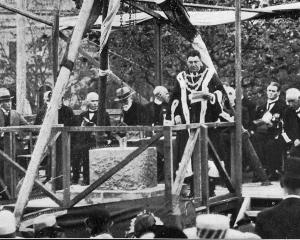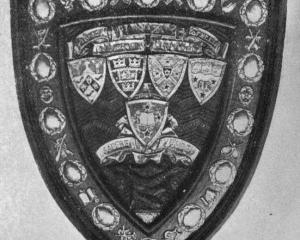
A special note has also been sent to the Holy See, bringing the action to its notice, and appealing for the Pope’s interest to secure peace. The Note says that a conscientious examination of the situation of all belligerents no longer leaves doubt that all long for the speedy end of the bloody struggle. Hitherto it has not been possible to create preliminary conditions calculated to bring peace efforts nearer realisation and bridge the gulf separating the belligerents. It reviews previous peace efforts, and adds: ‘‘Though discussions prove that the differences still separating the belligerents’ conception of peace conditions are not slight, nevertheless an atmosphere has been formed which no longer excludes the discussion of peace.’’
First wholly welded ship
The first steel vessel built without rivets has just been launched, somewhere on the south coast of England. The vessel was built in a shipyard operated by the Inland Waterways and Docks Section of the Royal Engineers, and as her production may mark an epoch in the shipbuilding industry, it is satisfactory that the initial experiment has taken place in Great Britain. Instead of riveting and caulking the plates, they are joined together in one process by electric welding. This means that the plates are held together temporarily by bolts, and that the point is then submitted to local heat by means of an electric arc, so that the two plates are fused together. Though the process itself is not new, as certain auxiliary work on ships has been done by electric welding in the past, considerable developments have been made in the last 12 months, and this is the first time that a vessel has been produced entirely by the new method. Its general adoption would speed up production.
Energy and enterprise urged
The president of the Chamber of Commerce (Mr J. B. Waters) delivered an interesting address at last night’s meeting of the chamber, in which he suggested that the members approach the year’s work in a spirit of energy, enterprise, and discovery. His predecessor, Mr Bow, said the speaker, in his retiring address, directed attention to several matters of supreme commercial interest. He emphasised the need for railway extension, for an improved educational system, for the development of hydro-electric energy, and for a New Zealand-owned deep sea fleet.
Oamaru street lights
The street electric lighting installation at Oamaru was switched on on Friday night. There are 200 lamps. The streets were brilliantly illuminated, the system working without a hitch. It is understood that an officer of the Public Works Department will shortly visit Oamaru to thoroughly inspect the whole plant, and that an official of the Fire Insurance Underwriters’ Association will inspect the house installation. — ODT, 17.9.1918.
• COPIES OF PICTURE AVAILABLE FROM ODT FRONT OFFICE, LOWER STUART ST, OR WWW.OTAGOIMAGES.CO.NZ












